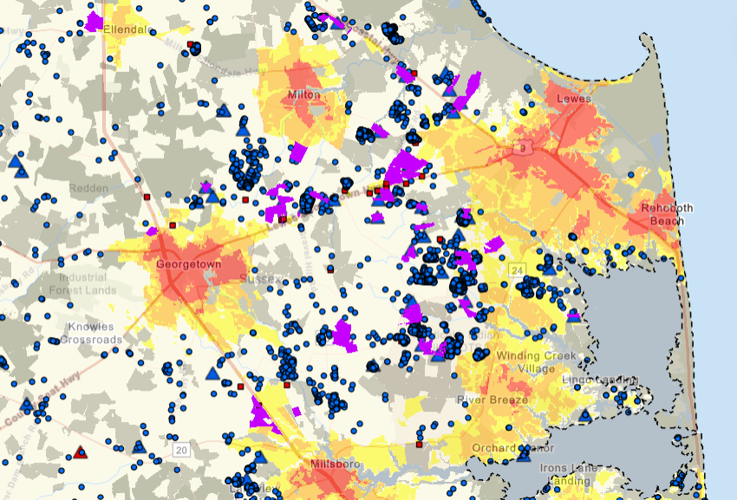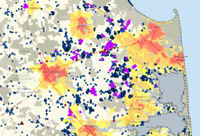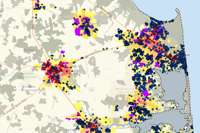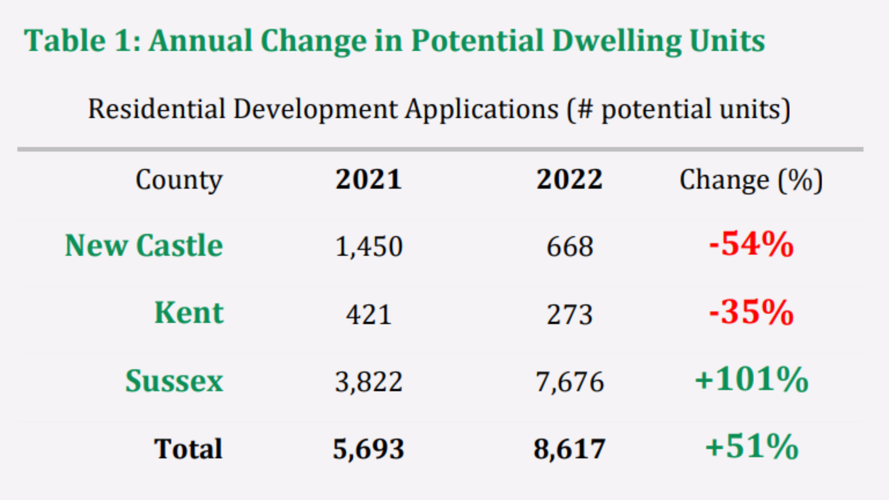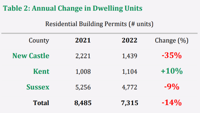LEWES, Del. - The 2023 report on state planning issues shows that Sussex County has seen a one-year increase in development applications of 101 percent. This is the highest level of developer interest in the Sussex County residential market since 2008, according to the Delaware Office of State Planning Coordination. The report, which was compiled for Gov. John Carney and the General Assembly, organizes data from 2022 in comparison to years prior.
STATE PLANNING ISSUES REPORT FINDINGS
This increase in development approval applications is solely responsible for a 51 percent statewide increase in potential housing units, according to the report, as nearly 7,700 potential units in Sussex County made up 89 percent of the state's total applications in 2022.
Sussex County is the state's largest county by land area. Though it saw a 9 percent decrease in residential building permits in 2022, 65 percent of the state's total permits were in Sussex County, which this report says is the highest in over five years.

Delaware residential development trends organized by county. In both number of units approved through applications and number of building permits issued from 2018 through 2023, Sussex County led the other two counties. Courtesy Delaware Office of State Planning.
RECOMMENDATIONS
The report organizes recommendations for consideration that address concerns in categories like housing development practices and infrastructure in rural areas. The state breaks areas up into different investment levels ranging from urban Level 1 spaces to rural Level 4 spaces. Levels 1, 2, and 3 are urban or urbanizing, while Level 4 is more focused on preservation.
- Level 1 areas include Wilmington, Dover and Seaford. These are seen as more mature, established areas with infrastructure and other services already in place.
- Level 2 areas have newer infrastructure and planned investments.
- Level 3 areas are less established but are experiencing development pressures. They require more advanced planning and are for longer-range development.
- Level 4 areas include agriculture and natural resources. These generally lack public services and infrastructure necessary to support large developments and therefore are not suited for large residential communities or schools, according to the Office of State Planning.
The annual report notes that state investments for health, safety and welfare in rural Level 4 areas could inadvertently spur development interest in surrounding lands. According to the office, this infrastructure is usually not designed for additional growth and would require significant capital investments for upgrades if development does occur.
Regarding housing, the annual report on state planning issues also notes that local land-use practices and the real estate market are continuing an increase in single-family housing developments. It says this development frequently occurs in areas where conservation should be encouraged and that this practice makes it difficult to meet conservation and climate goals, strains the state's infrastructure budgets and is often incompatible with fair housing goals.
LOCAL ACTION
The Sussex Preservation Coalition will address concerns regarding a new development planned in Lewes called Cool Springs Crossing at an upcoming meeting. The project comprises of around 1,200 homes and 165,000 feet of commercial space, which is equivalent to slightly less than three football fields. According to the coalition, this development is being proposed in a Level 4 conservation area. The Office of State Planning's report says Sussex County residential development activity is disproportionally located in Level 4 areas.
Residential development growth in Sussex County will be the focus of the Sussex Preservation Coalition's February monthly meeting. Office of State Planning Coordination Director Dave Edgell and Principal Planner Dorothy Morris are expected to speak. The group will meet Feb. 13 from 7 to 8:30 p.m. at the Lewes Public Library.
The annual state planning report can be found at stateplanning.delaware.gov. More data and visualizations of development in Sussex County can be accessed at devtrends.stateplanning.delaware.gov.





